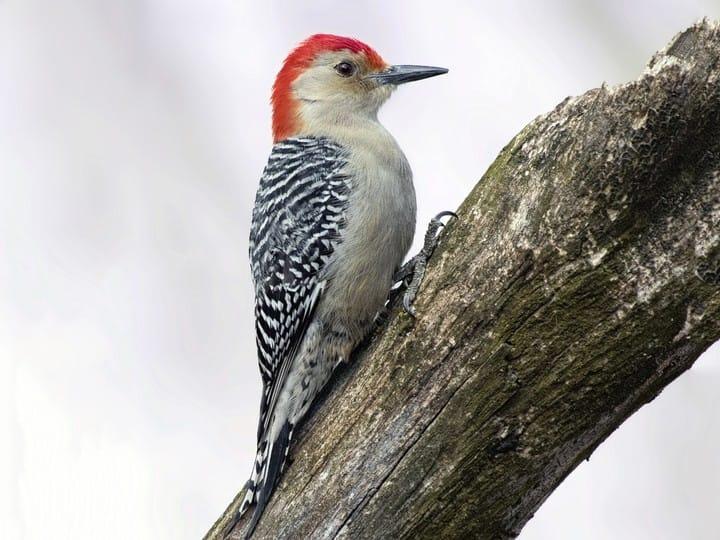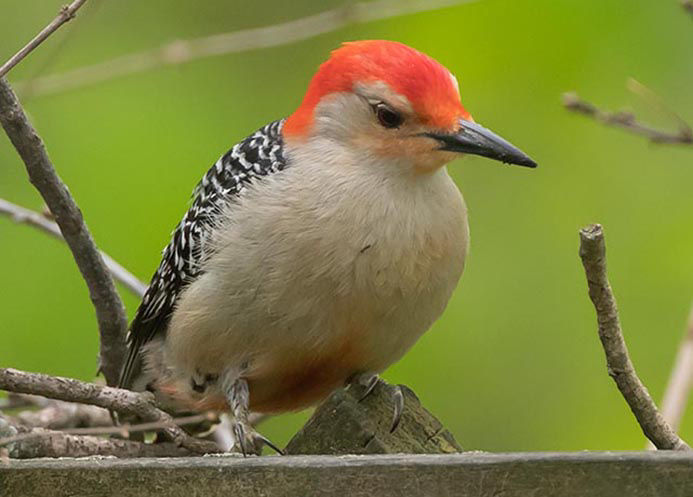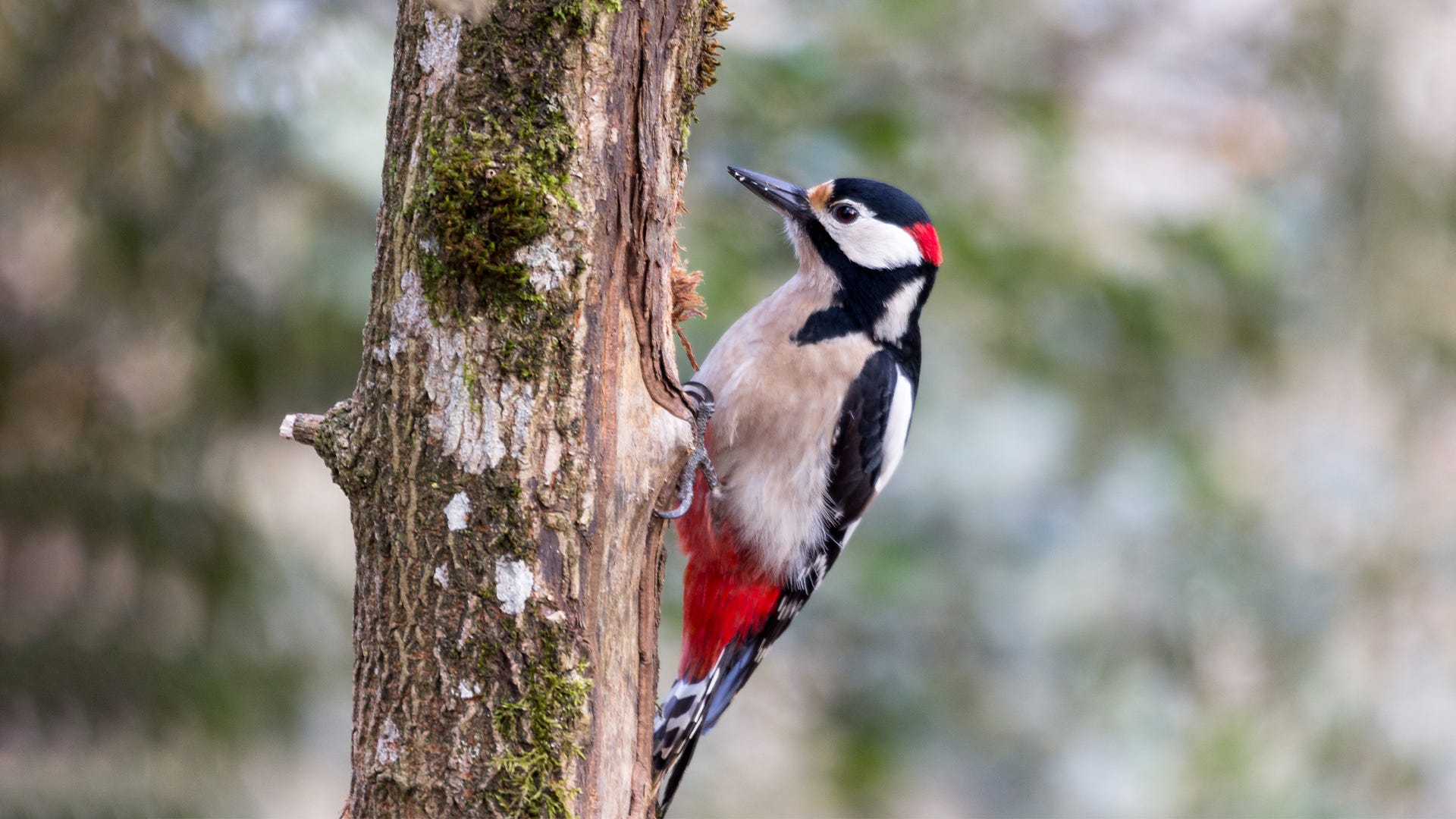Exploring Woodpeckers in Florida Habitats: Where to Detect These Birds
Exploring Woodpeckers in Florida Habitats: Where to Detect These Birds
Blog Article
Woodpeckers Unleashed: Discovering the Wonders of These Experienced Tree Climbers
Woodpeckers, with their unique markings and balanced drumming resembling with wooded locations, hold a special location in the bird globe - Woodpeckers in Florida. As we delve into the detailed details of woodpeckers' nesting routines, feeding strategies, and the continuous preservation initiatives to safeguard these impressive birds, a deeper gratitude for their area in nature unravels.
Anatomy and Adaptations
When taking a look at the makeup and adjustments of woodpeckers, one can observe remarkable functions that make it possible for these birds to thrive in their specialized environmental specific niche. Woodpeckers are outfitted with a collection of unique anatomical qualities that help them in their woodpecking habits. Among one of the most noticeable attributes is their solid, chisel-like beak, which is specialized for drilling right into timber to uncover insects or create nesting cavities. This beak is supported by strong neck muscles and a highly developed skull structure that serves as a shock absorber, allowing woodpeckers to consistently peck at trees without triggering brain injury. Additionally, woodpeckers have zygodactyl feet, with two toes facing forward and two facing backward, providing a company hold on tree trunks while they browse for food or drum for communication.
Additionally, woodpeckers have an one-of-a-kind tongue structure that is long, barbed, and sticky, allowing them to extract insects from gaps in wood. This specific adaptation enables woodpeckers to exploit a food resource that is unattainable to several other bird species. In general, the anatomy and adaptations of woodpeckers showcase the impressive transformative options that have allowed these birds to thrive in their arboreal environment.
Drumming Habits
Having actually checked out the composition and adjustments of woodpeckers, the focus currently moves to recognizing their drumming behavior, a distinct aspect of their communication and territorial displays. Drumming is a vital kind of communication amongst woodpeckers, serving several purposes such as establishing areas, attracting companions, and signaling alarm system. Each woodpecker types has an unique drumming pattern that assists people acknowledge participants of their very own species and identify them from competitors or predators.
Woodpeckers create drumming sounds by quickly pecking on powerful surfaces such as dead trees, energy poles, and even steel objects, developing a collection of rhythmic beats. The strength and speed of drumming can vary based on the objective; for example, a fast drumming series may represent aggressiveness towards trespassers, while a slower and softer drumming pattern can show courtship (Woodpeckers in Florida). Additionally, woodpeckers may change the regularity and period of their drumming to convey particular messages properly
Nesting Habits
Checking out the nesting routines of woodpeckers discloses fascinating insights into their reproductive behaviors and habitat options. Woodpeckers are understood for their one-of-a-kind nesting choices, frequently excavating tooth cavities in trees to produce protected areas for increasing their young. These dental caries offer not just as a nesting website however likewise as a safe haven from killers and severe climate.
Woodpeckers show a high degree of integrity to their nesting websites, commonly going back to the very same area time after time. This actions highlights the relevance of ideal environment accessibility for their reproductive success. The choice of a nesting site is important for woodpeckers, with aspects such as tree types, height, and decay phase playing substantial roles in their decision-making process.
Interestingly, some woodpecker species are known to excavate multiple cavities within their region, providing themselves with alternative nesting alternatives. This approach may function as a form of insurance against prospective threats or disturbances to their primary nesting website.

Feeding Strategies
Woodpeckers utilize a range of specialized feeding strategies to acquire their main food sources. Among why not look here one of the most distinct feeding actions of woodpeckers is drumming, which involves fast pecking on trees to uncover bugs below the bark. This drumming not just helps them situate prey however also acts as a means of interaction with other woodpeckers. Woodpeckers have solid, chisel-like beaks that allow them to drill into wood effortlessly. When an opening is developed, they utilize their lengthy, barbed tongues to remove insects such as ants, beetles, larvae, and spiders. These tongues are coated with sticky saliva that helps trap the published here prey. Woodpeckers are also known to excavate cavities in trees to gain access to concealed insect larvae or sap. Some types, like the acorn woodpecker, shop nuts in specifically developed openings called granaries. This critical saving of food assists them make it through throughout food shortage periods. Woodpeckers are really exceptional in their feeding methods, showcasing flexibility and intelligence in obtaining their nourishment.
Conservation Efforts
Among the complex feeding methods exhibited by woodpeckers, the preservation initiatives focused on safeguarding these remarkable birds play a vital function in preserving their environments and populations. Woodpeckers face numerous risks to their survival, including environment loss because of logging, environment change modifying their ecological communities, and accidents with man-made frameworks such as structures and vehicles - Woodpeckers in Florida. Conservationists are proactively working to resolve these difficulties and ensure the lasting well-being of woodpecker varieties

Education and public awareness projects are likewise vital parts of woodpecker preservation efforts. By raising recognition concerning the significance of these birds in maintaining healthy and balanced forest ecosystems, preservationists can gather assistance for habitat conservation campaigns and advertise accountable land administration practices. Through collective efforts between researchers, policymakers, and local communities, we can interact to safeguard a future where woodpeckers prosper in their all-natural environments.
Conclusion

Report this page